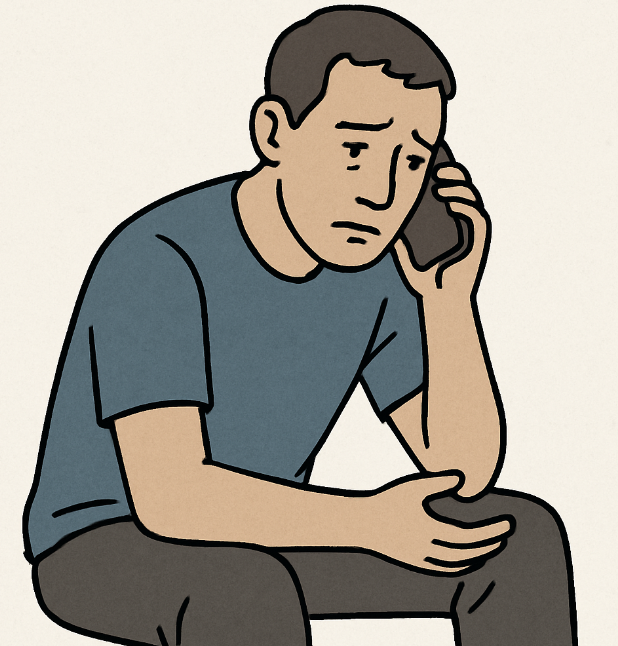
How a Pittsburgh Program Cuts Overdose Risk by 99%
When Marcus left the Allegheny County Jail, he had nothing—no ID, no insurance, no medication for his opioid use disorder. What he did have was a phone number handed to him before release. He called it the next morning. Within hours, he was speaking to a doctor, receiving a prescription for buprenorphine, and setting up an in-person visit at a clinic he could actually reach.
That phone number connected him to the Rethinking Incarceration and Empowering Recovery (RIvER) Clinic, a Pittsburgh-based program redefining how health systems catch people before they fall through the cracks.
The Hidden Crisis After Release
For people leaving incarceration, the two weeks following release can be deadly. Research shows the risk of overdose death is 129 times higher than for the general population. In that fragile window, people often lose access to medication, housing, transportation, and insurance.
Even for those who received medications for opioid use disorder (MOUD) behind bars, the benefits fade quickly without a handoff to community care. Few clinics are ready—or willing—to meet patients the day they walk free.
The COVID-19 pandemic made this gap worse. “Decarceration” policies rapidly reduced jail populations, but many people were discharged while detoxing, uninsured, and unconnected to treatment. Only about one in twenty justice-referred individuals in the U.S. receive MOUD in the community after release.
That is where RIvER steps in.
The RIvER Clinic Model
Launched in 2021, the RIvER Clinic operates as a multidisciplinary, community-embedded service that meets people where they are. The team includes physicians, a nurse navigator, a social worker, a community health worker, a patient care navigator, and a peer recovery specialist—all coordinated under one roof.
Their innovation is the “telebridge” program: a same-day telemedicine service that allows individuals to access MOUD prescriptions immediately after release, without needing to travel or navigate bureaucracy first.
Here’s how it works:
- A person leaving jail receives RIvER’s card with a direct cell number.
- When they call, the nurse navigator answers live, adds a physician to the call, and assesses withdrawal and medical needs.
- If the person is uninsured, dedicated county funds cover their prescription until Medicaid or other coverage reactivates.
- A follow-up in-person appointment is scheduled within days.
In short, the clinic bridges the most dangerous gap in the care continuum—the time between freedom and the first appointment.
What the Study Found
Researchers conducted a retrospective review of 250 RIvER patients between 2021 and 2025. All had a history of incarceration and opioid use disorder.
Key results:
- 92% of telebridge calls resulted in a same-day MOUD prescription.
- 74% of patients attended an in-person follow-up visit.
- Patients averaged 9 in-person appointments in the following year.
- There was a 40% reduction in emergency department (ED) use after participation.
- Only one fatal overdose occurred among all participants—a rate (0.4%) far below the 10% typical in similar post-incarceration groups.
While the drop in ED visits wasn’t statistically significant, the trend was clear: telemedicine reduced costly, crisis-driven care and built stable engagement instead.
Key Insight
“We assumed people just needed better discharge planning,” said lead author Dr. Thomas Robertson of Allegheny Health Network. “What we found is that they need immediate access—a real person, a real prescription, right now.”
What This Means in Practice
For local health departments, community health centers, and policymakers, the RIvER model offers a replicable blueprint for harm reduction and reentry care.
For Health Departments
- Integrate telemedicine MOUD into reentry or diversion programs.
- Use flexible funding to cover uninsured prescriptions temporarily.
For Correctional and Justice Partners
- Build pre-release handoffs—introduce patients to telebridge teams before discharge.
- Share data securely with community clinics to maintain treatment continuity.
For Community-Based Organizations
- Train community health workers and peers as navigators.
- Provide access points in trusted, non-clinical spaces (libraries, shelters, recovery centers).
Barriers and Next Steps
Telemedicine for controlled substances remains under evolving regulation. During COVID-19, the DEA temporarily suspended the in-person evaluation rule for buprenorphine prescribing. As those flexibilities sunset, clinics like RIvER could lose their rapid-access edge unless permanent policies are enacteds12913-025-13520-z.
Other barriers include:
- Insurance lapses and state-to-state Medicaid transfer delays
- Transportation and technology access
- Workforce burnout and funding for wraparound services
Still, the model’s success under pandemic conditions highlights its resilience—and its promise for scaling nationally.
Why It Matters
Addiction recovery after incarceration is not just a clinical issue; it’s a test of how well public health systems value human life at its most precarious point. Telemedicine can’t replace empathy or community, but it can open a door that was once locked.
Programs like RIvER remind us that innovation in public health doesn’t always mean new technology—it means new timing. Meeting someone the day they need you can make the difference between relapse and recovery, between another statistic and another chance.
Conversation Starters
- How might your local reentry or addiction program use telemedicine to close the gap?
- What barriers—policy, funding, or technology—keep people from accessing same-day care?
- Could similar “bridge” models apply to mental health or chronic disease management post-release?



